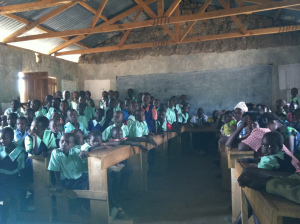A team of researchers have recommended for more time between teachers and pupils as a way of improving the ability of pupils to read and do maths from an early stage in school.
In a report released recently, the Kenya Primary Math Reading Initiative (PRIMR), the scholars have argued that the current system of teaching makes it difficult for pupils to grasp reading because the teacher spends the entire lesson on a single subject.
“Not only should more time be spent, but also the way time is spent should change,” they argued in the document.
“This means a more balanced use of time between substantive areas of literacy and math, but also a greater variety of instructional topics within a 30-minute period.”
But parents were also encouraged to take a lead role in helping their children to learn how to read and write faster.
According to Executive Secretary for Education and ICT in Homabay County Mr. Naftali Mata, one of the lead researchers for the report, parents should be the first teachers of children.
“When you have a child, on the first day of that child, a parent becomes a guide. And so, when you hand over that child, don’t expect teachers to be parents or the ones to bring that child up,” He said.
“You should continue to be interested in what they read, work with them buy them books and encourage them to change their attitudes towards reading.”
The report suggests an improvement in quality of education now that the number of children in schools has been rising every year from the free primary education programme started ten years ago.
Coming on the backdrop of a recent survey by Uwezo Kenya which showed that as many as 70 per cent of pupils in our primary schools cannot read nor do math meant for lower classes, the document reasons that kids can grasp more reading or calculating abilities if teachers vary their topics in a single lesson.
“Teachers spend much more time actually teaching, and a variety of instructional topics are addressed within a lesson. This pushes the pupils’ individual work to homework or at other times, increasing functional contact between teachers and pupils,” the report titled the Primary Math and Reading Initiative Midterm Impact Evaluation.
This is one of several suggestions a team of educationist charged with improving literacy and numeracy among school kids want implemented.
The survey, funded by both the USAID and UKAID, does not offer conclusive findings about whether this proposal should be adopted in totality because most of the sampled schools were in urban areas.
However, the programme which was initiated five years ago , shows that a number of tests to improve literacy in Kiswahili and English were positive.
For a start, 500 schools were put on a pilot programme where teachers were trained, newer teaching methods, cheaper books and extended teaching time was used to gauge the response of pupils to reading ability.
Initially, data from a selected 4385 pupils in 230 schools was assessed and then 216 of those schools checked again after a year.
The results was that where the above methods were used, pupils could read about 3.3 times better in English and Kiswahili, could pronounce letters better and were quicker at inventing words from a set of given letters in non-formal schools. This figure rose to about 27.9 per cent in formal schools.
Figures for the impact of these methods in math would be released in October but the results also varied based on the language tested. For example in Kiswahili tests, the number of pupils with faster reading abilities rose by 17.6 per cent when the new methods of instruction were used.
“Kenya has a very strong education system in the region, but there are areas we need to improve on. This (literacy) may be a forgotten area but it is very important,” said Madam Stella Were of Saint Joseph Kakrigu Girls Secondary School in Rusinga Island.















